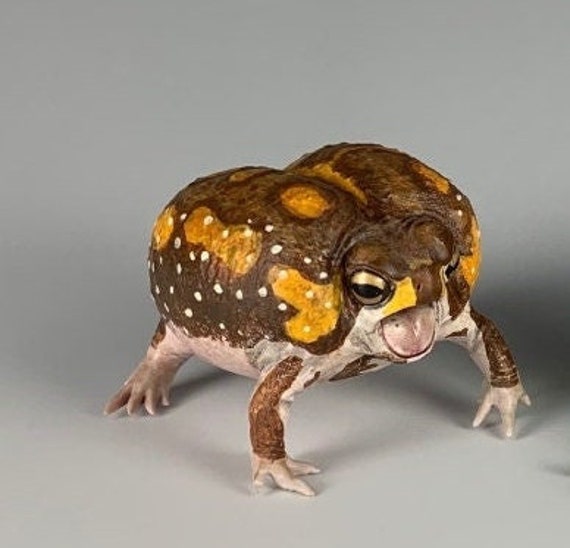Rain Frog for Sale: Boost Your Collection with Rare and Unique Amphibians!
Rain Frog for Sale: Boost Your Collection with Rare and Unique Amphibians!
Blog Article
The Most Effective Reptile Enclosures: Exactly How to Develop the Ideal Habitat
Producing the best habitat for reptiles is not almost putting them in a tank or enclosure; it entails a thoughtful factor to consider of different variables that add to their general health. From the dimension of the room to the sort of substratum made use of, every component plays an important function in offering an environment where your reptile can thrive. By understanding the certain requirements of your reptile varieties and applying the appropriate environment configuration, you can guarantee their health and happiness in captivity.
Choosing the Right Enclosure Dimension
When choosing a room size for reptiles, it is imperative to consider their all-natural habits and room requirements to ensure their health and wellness. Various reptile species have differing demands when it pertains to environment area. Arboreal types like chameleons or tree serpents need upright area for perching and climbing up, while terrestrial varieties such as bearded dragons or leopard geckos need even more floor room for checking out and thermoregulation. Aquatic turtles like red-eared sliders demand rooms with both water and acreage for swimming and basking.
A general regulation of thumb is to offer adequate space for the reptile to display all-natural behaviors, such as basking, concealing, climbing up, and foraging. By meticulously thinking about the specific demands of the reptile types in concern, proprietors can produce a suitable and enriching environment that promotes general health and encourages all-natural behaviors.
Establishing Correct Burner
To make sure the health and wellness of reptiles in their enclosures, it is vital to meticulously establish up correct heating components. Reptiles are ectothermic animals, implying they depend on outside warmth sources to control their body temperature level. When establishing heating elements in a reptile enclosure, it is critical to consider the details temperature needs of the varieties you are taking care of. Various reptiles have varying temperature requires based on their all-natural environment, so it is very important to research and recognize these demands.
One reliable and common heating element for reptile enclosures is a heat lamp or ceramic warmth emitter. These heat resources can be used to produce a temperature level slope within the room, allowing reptiles to move in between warmer and cooler locations as needed. In addition, under-tank hot pad or warm floor coverings can be used to give belly heat, which is particularly useful for reptiles that require extra heat to aid in digestion.
Keeping track of the temperature level within the unit using a thermometer is necessary to guarantee that the heating aspects are keeping the appropriate temperature array for your reptile. Consistently check and change the burner as required to create a comfy and healthy and balanced atmosphere for your scaly buddy.
Selecting Appropriate Lighting Components

Offering the Ideal Substratum
Choosing the ideal substrate is necessary for creating a comfy and suitable atmosphere for reptiles in their rooms. Some reptiles, such as desert-dwelling varieties like bearded dragons, thrive on substratums like calcium sand or reptile carpet, while others, like round pythons, like coconut husk or aspen bed linens to maintain moisture degrees.
Avoid substratums that can cause impaction, such as loose substrates like sand or gravel, specifically for reptiles recognized to consume their bed linen. Regularly cleansing and replacing the substrate is important to make certain a tidy and hygienic setting for your reptile.
Decorating for Enrichment and Comfort
Taking into consideration the substratum's role in supplying a foundation for natural behaviors and maintaining a suitable atmosphere, improving the reptile room with appropriate decorations is crucial for both enrichment and convenience. Decors such as branches, rocks, hideouts, and artificial plants not just create an extra aesthetically attractive environment however also serve practical objectives. Branches give climbing up opportunities for arboreal varieties, while rocks can function as basking areas for warmth. Hideouts use shelter and safety and security, decreasing stress and anxiety levels for the reptile. Artificial plants not just boost the aesthetics but likewise provide concealing areas and enrichment by enabling the reptile to communicate and check out with its atmosphere. When embellishing the room, it is important to consider the reptile's species-specific needs and habits to create an area that advertises mental and physical well-being. By incorporating a range of designs that simulate the reptile's all-natural habitat, proprietors can ensure their pet dog's comfort and boost their all-natural reactions, ultimately leading to a happier and much healthier reptile.
Final Thought

Producing the excellent habitat for reptiles is not just concerning placing them in a storage tank or unit; it includes a thoughtful factor to consider of various factors that contribute to their general well-being.Picking the ideal substrate is important for developing a comfortable and appropriate setting for reptiles in their enclosures. Some reptiles, such as desert-dwelling species like you can try these out bearded dragons, prosper on substratums like calcium sand or reptile rug, while others, like round pythons, choose coconut husk or aspen bed linen to preserve humidity degrees.
By including a selection of decors that simulate the reptile's all-natural environment, more info here proprietors can ensure their family pet's convenience and promote their all-natural instincts, inevitably leading to a happier and healthier reptile.
In final thought, creating the excellent environment for reptiles involves selecting the appropriate room size, heating elements, lighting components, substratum, and decors.
Report this page